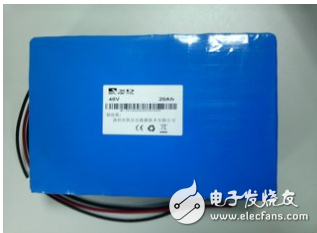Recently, iChEM researchers, Professor Wang Yonggang of Fudan University and his research team used a simple pre-lithiation method to construct a Li2V2(PO4)3//LixC lithium-ion battery system, which exhibits high power, long life and good performance. Low temperature performance.
In recent years, electric vehicles powered by lithium-ion batteries are rapidly developing. However, it is well known that the performance of lithium ion batteries rapidly decreases as the temperature decreases. This will greatly limit the application of electric vehicles in winter or some alpine regions.
Previous studies have shown that in addition to the low ionic conductance of the electrolyte at low temperatures, the low temperature performance of conventional lithium ion batteries based on graphite anodes is limited by the solvent/solvation of lithium ions entering and exiting the graphite at low temperatures . In response to this problem, the research team replaced the traditional graphite anode with a pre-lithiated hard carbon anode and combined with a lithium vanadium phosphate (Li2V2(PO4)3) anode to form a new battery system.
In recent years, Prelithiated hard carbon has been applied to hybrid lithium ion capacitors and exhibits excellent electrochemical performance. However, the pre-lithiation process is complicated and costly, and it involves the use of pure lithium electrodes, which has potential safety hazards. In this study, the researchers skillfully utilized the multi-step delithiation process of Li3V2(PO4)3 cathode material to achieve pre-lithiation of hard carbon.
During the first charging process, lithium ions are removed from the positive electrode to form Li2V2(PO4)3, and the desorbed lithium ions are embedded in the hard carbon negative electrode to form a pre-lithiated hard carbon negative electrode (LixC). Subsequently, Li2V2(PO4)3 and LixC form a lithium-ion battery system. When charged at 4.3V at 3.5, the battery exhibits high power and long life like a supercapacitor.
Further, although the conventional electrolyte LB303 was used, the battery exhibited excellent low-temperature properties. At minus 40 degrees Celsius, its capacity can maintain 67% of normal temperature capacity, far superior to conventional lithium-ion batteries. This is mainly due to the good low temperature performance of the nano-carbon coated Li2V2(PO4)3 cathode material and the relatively fast kinetics of the pre-lithiated hard carbon anode at low temperature.
However, it is worth noting that only a part of the capacity of Li3V2(PO4)3 is utilized in the battery system, and the energy density is limited, which is suitable for use as a start-stop battery. In addition, as the temperature decreases, the ionic conductance of the electrolyte drops rapidly, increasing the internal resistance of the battery, and therefore, the battery exhibits significant polarization at low temperatures. In the follow-up study, further development of high-performance low-temperature electrolytes is needed to improve the electrochemical performance of such batteries at low temperatures.

Shenzhen Xcool Vapor Technology Co.,Ltd , http://www.xcoolvapor.com